Africa · Attractions · Going Out · Malawi · Regions
Malawi’s varied attractions: wildlife, culture, landscape and lake
Described as the ‘Warm Heart of Africa’, Malawi is a relatively
little known gem of this diverse continent yet has so much to offer: wildlife, culture, scenery, and of course Lake Malawi. It is the unique combination of these attractions that make Malawi so special. Where else will you find a genuinely warm welcome in a country at peace with itself, a diverse scenic kaleidoscope in such a small area, central Africa’s highest mountain, vast high plateaux with seemingly limitless views, forests, unspoilt Big 5 game parks and, the jewel in the crown, Africa’s third largest and most beautiful Lake?
 Malawi’s tourism has witnessed unprecedented development in recent years. New lodges have opened and existing hotels and lodges have been enlarged and upgraded. The tourist infrastructure remains small scale but what’s there is of a high standard. The country’s reserves have been developed through conservation and extensive restocking, and investment has been put into infrastructure such as roads, domestic transfers, and lake transport, making Malawi not just stunning, rewarding, and memorable, but also easy and safe. Malawi a fast-emerging destination that’s simply waiting to be discovered!
Malawi’s tourism has witnessed unprecedented development in recent years. New lodges have opened and existing hotels and lodges have been enlarged and upgraded. The tourist infrastructure remains small scale but what’s there is of a high standard. The country’s reserves have been developed through conservation and extensive restocking, and investment has been put into infrastructure such as roads, domestic transfers, and lake transport, making Malawi not just stunning, rewarding, and memorable, but also easy and safe. Malawi a fast-emerging destination that’s simply waiting to be discovered!
 In this blog we aim to give an overview of the main types of attraction this undiscovered gem has to offer: Wildlife, Culture, Lake and Landscape.
Wildlife
Malawi has nine national parks and wildlife reserves which offer game viewing and tracking as it should be… intimate, exclusive and abundant. Each park has a maximum of just two lodges, so you can view the Big 5 without the crowds.
The Parks and Reserves cover a great variety of landscape and vegetation types, and include areas of genuine unspoilt wilderness. In the north are the unique and beautiful highlands of the Nyika Plateau National Park, and the low lying Vwaza Marsh Wildlife Reserve. Central Malawi has two vast game areas: Kasungu National Park in the west and Nkhotakota Reserve in the east. The latter, straddling the rugged and untouched wilderness of the Rift Valley Escarpment, has only recently been developed to accept visitors, but with that comes a sense of true wilderness, and the extensive animal relocations are already bearing fruit, including the largest ever elephant translocation in history. In the south is Liwonde, the most established National Park in the country, offering the most prolific game viewing along the River Shire and now home to cheetah and lion. There are also three game areas further south in the Lower Shire Valley: Lengwe National Park and the wildlife reserves of Majete and Mwabvi. Majete is a remarkable conservation success story, having been successfully re-stocked into a thriving Big 5 reserve and, more recently becoming home to a population of giraffe. Near the southern end of Lake Malawi is the world’s first freshwater national park at Cape Maclear. This is one of Malawi’s UNESCO World Heritage Sites.
In this blog we aim to give an overview of the main types of attraction this undiscovered gem has to offer: Wildlife, Culture, Lake and Landscape.
Wildlife
Malawi has nine national parks and wildlife reserves which offer game viewing and tracking as it should be… intimate, exclusive and abundant. Each park has a maximum of just two lodges, so you can view the Big 5 without the crowds.
The Parks and Reserves cover a great variety of landscape and vegetation types, and include areas of genuine unspoilt wilderness. In the north are the unique and beautiful highlands of the Nyika Plateau National Park, and the low lying Vwaza Marsh Wildlife Reserve. Central Malawi has two vast game areas: Kasungu National Park in the west and Nkhotakota Reserve in the east. The latter, straddling the rugged and untouched wilderness of the Rift Valley Escarpment, has only recently been developed to accept visitors, but with that comes a sense of true wilderness, and the extensive animal relocations are already bearing fruit, including the largest ever elephant translocation in history. In the south is Liwonde, the most established National Park in the country, offering the most prolific game viewing along the River Shire and now home to cheetah and lion. There are also three game areas further south in the Lower Shire Valley: Lengwe National Park and the wildlife reserves of Majete and Mwabvi. Majete is a remarkable conservation success story, having been successfully re-stocked into a thriving Big 5 reserve and, more recently becoming home to a population of giraffe. Near the southern end of Lake Malawi is the world’s first freshwater national park at Cape Maclear. This is one of Malawi’s UNESCO World Heritage Sites.
 A safari in Malawi is about memorable experiences, not just tick lists; plenty of game in beautiful surroundings but no convoys of vehicles characteristic of some African game parks. Visitors are relatively few in number, giving everyone the opportunity to experience all types of safari: in a 4×4, by boat, or on foot, and even wildlife viewing from your balcony, in peaceful privacy.
A safari in Malawi is about memorable experiences, not just tick lists; plenty of game in beautiful surroundings but no convoys of vehicles characteristic of some African game parks. Visitors are relatively few in number, giving everyone the opportunity to experience all types of safari: in a 4×4, by boat, or on foot, and even wildlife viewing from your balcony, in peaceful privacy.
 Malawi is also an ornithologist’s paradise. Few countries in the whole of Africa can rival Malawi’s range of bird species, coupled with the relative ease of birdwatching. Around 650 species have been identified with over ten per cent not being seen in other parts of southern Africa. Best known is the fish eagle to be seen at the Lake and along the River Shire. But the greatest variety of animal species is to be found under water, with Lake Malawi a real life aquarium that is home to around 1000 species of tropical fish – a number unsurpassed anywhere else in the world.
Culture
‘The Warm Heart of Africa’ is not just a marketing slogan, it’s a reality. Malawians are the most friendly people you could meet anywhere in the world. A warm, welcoming and safe nation, locals love to share their communities with visitors; and cultural experiences here are genuine and true to life.
Even in the context of Malawi’s great natural riches and attractions, its people are its greatest asset: friendly and welcoming. All visitors are met with smiles and a genuinely warm and lasting welcome. With a population now over 18 million, Malawi is one of the more densely populated countries in this region of Africa. Most people live in traditional rural villages. But these villages give visitors a wonderful opportunity to have a glimpse of real Africa – daily life as it is today in the heart of the continent. These are not tourist creations, but real people in real villages going about their lives. They are pleased to welcome in respectful visitors and proud to show them round. The majority of Malawi’s tourist lodges across the country have strong links to their local communities and can easily arrange village visits.
Malawi is also an ornithologist’s paradise. Few countries in the whole of Africa can rival Malawi’s range of bird species, coupled with the relative ease of birdwatching. Around 650 species have been identified with over ten per cent not being seen in other parts of southern Africa. Best known is the fish eagle to be seen at the Lake and along the River Shire. But the greatest variety of animal species is to be found under water, with Lake Malawi a real life aquarium that is home to around 1000 species of tropical fish – a number unsurpassed anywhere else in the world.
Culture
‘The Warm Heart of Africa’ is not just a marketing slogan, it’s a reality. Malawians are the most friendly people you could meet anywhere in the world. A warm, welcoming and safe nation, locals love to share their communities with visitors; and cultural experiences here are genuine and true to life.
Even in the context of Malawi’s great natural riches and attractions, its people are its greatest asset: friendly and welcoming. All visitors are met with smiles and a genuinely warm and lasting welcome. With a population now over 18 million, Malawi is one of the more densely populated countries in this region of Africa. Most people live in traditional rural villages. But these villages give visitors a wonderful opportunity to have a glimpse of real Africa – daily life as it is today in the heart of the continent. These are not tourist creations, but real people in real villages going about their lives. They are pleased to welcome in respectful visitors and proud to show them round. The majority of Malawi’s tourist lodges across the country have strong links to their local communities and can easily arrange village visits.
 Many of today’s Malawians are descendants of the Bantu people who moved across Africa and into Malawi for hundreds of years up to the fifteenth century. There is now a rich cultural mix in Malawi with the Chewa being the most numerous tribe. Others include the Yao, the Nyanja and the Maravi. In the north the Tumbuka are prominent. Each tribe has contributed to the modern Malawi scene, whether it be in dress or dance or language. Masks are commonly used in various dances and ceremonies and these are usually tribe-specific. Traditional (African) doctors still attract many people and the two main ‘modern’ religions, Christianity and Islam, frequently exhibit a continuing adherence to traditional beliefs.
Many of today’s Malawians are descendants of the Bantu people who moved across Africa and into Malawi for hundreds of years up to the fifteenth century. There is now a rich cultural mix in Malawi with the Chewa being the most numerous tribe. Others include the Yao, the Nyanja and the Maravi. In the north the Tumbuka are prominent. Each tribe has contributed to the modern Malawi scene, whether it be in dress or dance or language. Masks are commonly used in various dances and ceremonies and these are usually tribe-specific. Traditional (African) doctors still attract many people and the two main ‘modern’ religions, Christianity and Islam, frequently exhibit a continuing adherence to traditional beliefs.
 Although a Malawi cultural experience is generally about interacting with local people, one or two places around the country offer some specific cultural highlights. The Chongoni hills near Dedza have wonderful caves containing stone-age rock art and are another of Malawi’s World Heritage Sites. Dedza itself is home to the famous Dedza Pottery, which is a centre of crafting excellence, as is Mua Mission, whose amazing wood carvings are exported around the world. Mua also has a wonderful cultural museum. For the most modern cultural experience there are burgeoning music scenes in the cities of Lilongwe and Blantyre.
Lake
Although Malawi is one of Africa’s smaller countries, one-fifth of its surface is water. Accounting for all but a small fraction of that is Lake Malawi (formerly Nyasa, which means lake!). In Africa, only Lakes Victoria and Tanganyika are larger. Lake Malawi was “discovered” by the Scottish missionary and explorer Dr David Livingstone just over 150 years ago and it now forms an integral part of Malawi’s cultural heritage, bringing sustenance, livelihood, tourism and leisure to the country.
Lying in part of the Great East African Rift Valley system, Lake Malawi’s size is impressive: 585 kilometres north to south and 80 kilometres east to west. In imperial measure this gives rough dimensions of 365 miles by 52 miles, hence the sobriquet: the Calendar Lake. Almost all the larger rivers flowing into the lake come from the west, across Malawi, and, remarkably, only one river, the Shire, flows out. The waters eventually spill into the Indian Ocean via the Zambezi. The Lake, in the north, is quite extraordinarily deep at 2300 ft/700 m, plunging well below sea level. This reflects the enormity of the natural faulting of the Great Rift Valley, which is the origin of the Lake.
Although a Malawi cultural experience is generally about interacting with local people, one or two places around the country offer some specific cultural highlights. The Chongoni hills near Dedza have wonderful caves containing stone-age rock art and are another of Malawi’s World Heritage Sites. Dedza itself is home to the famous Dedza Pottery, which is a centre of crafting excellence, as is Mua Mission, whose amazing wood carvings are exported around the world. Mua also has a wonderful cultural museum. For the most modern cultural experience there are burgeoning music scenes in the cities of Lilongwe and Blantyre.
Lake
Although Malawi is one of Africa’s smaller countries, one-fifth of its surface is water. Accounting for all but a small fraction of that is Lake Malawi (formerly Nyasa, which means lake!). In Africa, only Lakes Victoria and Tanganyika are larger. Lake Malawi was “discovered” by the Scottish missionary and explorer Dr David Livingstone just over 150 years ago and it now forms an integral part of Malawi’s cultural heritage, bringing sustenance, livelihood, tourism and leisure to the country.
Lying in part of the Great East African Rift Valley system, Lake Malawi’s size is impressive: 585 kilometres north to south and 80 kilometres east to west. In imperial measure this gives rough dimensions of 365 miles by 52 miles, hence the sobriquet: the Calendar Lake. Almost all the larger rivers flowing into the lake come from the west, across Malawi, and, remarkably, only one river, the Shire, flows out. The waters eventually spill into the Indian Ocean via the Zambezi. The Lake, in the north, is quite extraordinarily deep at 2300 ft/700 m, plunging well below sea level. This reflects the enormity of the natural faulting of the Great Rift Valley, which is the origin of the Lake.
 With its long stretches of totally uninhabited golden sand lakeshore, lapped by crystal clear waters, Lake Malawi is recognised as one of the country’s leading tourist attractions. It is perhaps the most important asset in Malawi’s huge potential for an expanding tourist industry. Visitors marvel at the beautiful golden sand beaches and appreciate all that this freshwater, tideless, inland sea has to offer. Many, seeing the lake for the first time, cannot believe that this is not the Indian Ocean!
The lake has so much to offer the visitor that it must surely be only a matter of time before it becomes one of the great attractions for travellers to this part of Africa. Whether it be water sports, its own national park, enticing off-shore islands or simply the abiding beauty of the lakeside, there is something for all tastes. The lake is Malawi’s seaside, without the problem of tides. The few days in the year when winds whip up the surface to storm conditions do nothing to lessen the attraction of this vast inland sea.
With its long stretches of totally uninhabited golden sand lakeshore, lapped by crystal clear waters, Lake Malawi is recognised as one of the country’s leading tourist attractions. It is perhaps the most important asset in Malawi’s huge potential for an expanding tourist industry. Visitors marvel at the beautiful golden sand beaches and appreciate all that this freshwater, tideless, inland sea has to offer. Many, seeing the lake for the first time, cannot believe that this is not the Indian Ocean!
The lake has so much to offer the visitor that it must surely be only a matter of time before it becomes one of the great attractions for travellers to this part of Africa. Whether it be water sports, its own national park, enticing off-shore islands or simply the abiding beauty of the lakeside, there is something for all tastes. The lake is Malawi’s seaside, without the problem of tides. The few days in the year when winds whip up the surface to storm conditions do nothing to lessen the attraction of this vast inland sea.
 It is a remarkable fact that there are more species of fish found in Lake Malawi than are found in all of the lakes and rivers of Europe and North America combined! Those 1000+ species are mostly brightly coloured tropical fish that are very easily viewed when snorkelling, or diving. Lodges and hotels dotted along the Lake’s shore and islands offer a variety of accommodation at all levels and also plenty of activities. As well as the snorkelling and diving, water sports such as sail-boarding, kayaking, paddle-boarding, sailing, kayaking, and kite-surfing are available, though many visitors struggle to move away from the beach or a hammock! Journeys on the Lake range from the famous ‘lake ferry’, the mv Ilala, to sailing in an ocean-going yacht or exploring on a kayak expedition. Visitors are also welcome to explore the traditional fishing villages scattered along the shore to experience Malawi’s famed friendliness and ease of cultural interactions – even have a go at paddling a dugout canoe!
Landscape
Malawi’s natural scenery is stunningly beautiful. The diversity of landscapes is breath-taking and changes around every bend in the road: untouched wilderness, high plateaux, mountain peaks, riverine lowlands, vast tracts of forest, grasslands, and plantations of sugar and tea. All of this in a country smaller than England.
The highest peaks in Malawi touch 10,000ft/3000m while the lowlands are barely above sea level. These great contrasts help to make the landscape of Malawi one the most varied in Africa. The scenery, including its cloak of vegetation, presents an ever-changing vista that transforms through the seasons.
It is a remarkable fact that there are more species of fish found in Lake Malawi than are found in all of the lakes and rivers of Europe and North America combined! Those 1000+ species are mostly brightly coloured tropical fish that are very easily viewed when snorkelling, or diving. Lodges and hotels dotted along the Lake’s shore and islands offer a variety of accommodation at all levels and also plenty of activities. As well as the snorkelling and diving, water sports such as sail-boarding, kayaking, paddle-boarding, sailing, kayaking, and kite-surfing are available, though many visitors struggle to move away from the beach or a hammock! Journeys on the Lake range from the famous ‘lake ferry’, the mv Ilala, to sailing in an ocean-going yacht or exploring on a kayak expedition. Visitors are also welcome to explore the traditional fishing villages scattered along the shore to experience Malawi’s famed friendliness and ease of cultural interactions – even have a go at paddling a dugout canoe!
Landscape
Malawi’s natural scenery is stunningly beautiful. The diversity of landscapes is breath-taking and changes around every bend in the road: untouched wilderness, high plateaux, mountain peaks, riverine lowlands, vast tracts of forest, grasslands, and plantations of sugar and tea. All of this in a country smaller than England.
The highest peaks in Malawi touch 10,000ft/3000m while the lowlands are barely above sea level. These great contrasts help to make the landscape of Malawi one the most varied in Africa. The scenery, including its cloak of vegetation, presents an ever-changing vista that transforms through the seasons.
 Lake Malawi, its immediate shoreline and the valley of the Shire River which drains it, lie within the Great Rift Valley of eastern Africa. From the Lake, a series of escarpments climb to the Central African Plateau (1600-5000ft/500-1500m). This is gently undulating land, punctuated by occasional hills and forests. Rising to even greater heights are Malawi’s true mountains: the whaleback plateau of Nyika and the mountainous Viphya in the north, the Dowa Highlands in the centre and, in the south, the two great massifs of Zomba and, highest of all, Mulanje, Central Africa’s grandest peak. Clothed in forests and broken by streams and waterfalls, these highlands provide a landscape not expected of Africa. As well as viewing points from which to see across countless miles of varied and magnificent landscapes, the forest reserves and uplands offer activities from climbing to trekking, mountain biking to birdwatching, or simple cool tranquillity in surroundings of incredible natural beauty.
Lake Malawi, its immediate shoreline and the valley of the Shire River which drains it, lie within the Great Rift Valley of eastern Africa. From the Lake, a series of escarpments climb to the Central African Plateau (1600-5000ft/500-1500m). This is gently undulating land, punctuated by occasional hills and forests. Rising to even greater heights are Malawi’s true mountains: the whaleback plateau of Nyika and the mountainous Viphya in the north, the Dowa Highlands in the centre and, in the south, the two great massifs of Zomba and, highest of all, Mulanje, Central Africa’s grandest peak. Clothed in forests and broken by streams and waterfalls, these highlands provide a landscape not expected of Africa. As well as viewing points from which to see across countless miles of varied and magnificent landscapes, the forest reserves and uplands offer activities from climbing to trekking, mountain biking to birdwatching, or simple cool tranquillity in surroundings of incredible natural beauty.
 A visit to Malawi is not about staying in one place – it’s about touring, seeing new places and enjoying new experiences. Because of its compact size, in even a relatively short visit it is possible to experience the country’s range of attractions – lake, landscape, wildlife and culture – and see why Malawi is being tipped as Africa’s next ‘big’ destination.
Kelly White is Director of the Malawi Travel Marketing Consortium. Malawi Travel Marketing Consortium aims to provide you with the best information to make Malawi your tourism destination.
If you would like to be a guest blogger on A Luxury Travel Blog in order to raise your profile, please contact us.
A visit to Malawi is not about staying in one place – it’s about touring, seeing new places and enjoying new experiences. Because of its compact size, in even a relatively short visit it is possible to experience the country’s range of attractions – lake, landscape, wildlife and culture – and see why Malawi is being tipped as Africa’s next ‘big’ destination.
Kelly White is Director of the Malawi Travel Marketing Consortium. Malawi Travel Marketing Consortium aims to provide you with the best information to make Malawi your tourism destination.
If you would like to be a guest blogger on A Luxury Travel Blog in order to raise your profile, please contact us.
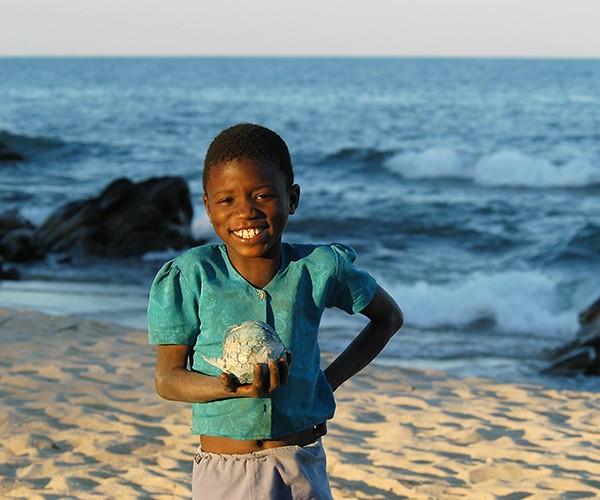 Malawi’s tourism has witnessed unprecedented development in recent years. New lodges have opened and existing hotels and lodges have been enlarged and upgraded. The tourist infrastructure remains small scale but what’s there is of a high standard. The country’s reserves have been developed through conservation and extensive restocking, and investment has been put into infrastructure such as roads, domestic transfers, and lake transport, making Malawi not just stunning, rewarding, and memorable, but also easy and safe. Malawi a fast-emerging destination that’s simply waiting to be discovered!
Malawi’s tourism has witnessed unprecedented development in recent years. New lodges have opened and existing hotels and lodges have been enlarged and upgraded. The tourist infrastructure remains small scale but what’s there is of a high standard. The country’s reserves have been developed through conservation and extensive restocking, and investment has been put into infrastructure such as roads, domestic transfers, and lake transport, making Malawi not just stunning, rewarding, and memorable, but also easy and safe. Malawi a fast-emerging destination that’s simply waiting to be discovered!
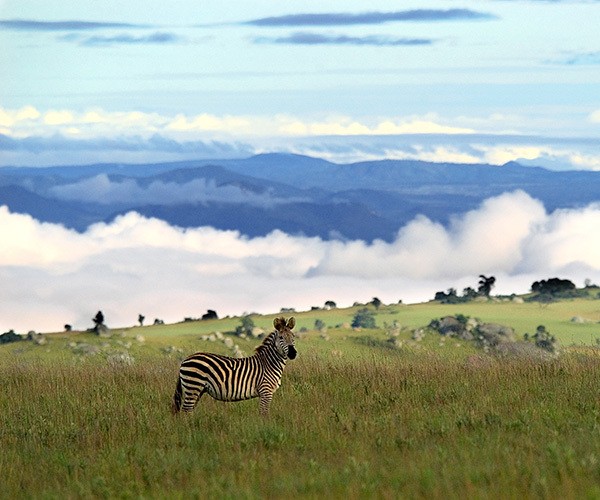 In this blog we aim to give an overview of the main types of attraction this undiscovered gem has to offer: Wildlife, Culture, Lake and Landscape.
Wildlife
Malawi has nine national parks and wildlife reserves which offer game viewing and tracking as it should be… intimate, exclusive and abundant. Each park has a maximum of just two lodges, so you can view the Big 5 without the crowds.
The Parks and Reserves cover a great variety of landscape and vegetation types, and include areas of genuine unspoilt wilderness. In the north are the unique and beautiful highlands of the Nyika Plateau National Park, and the low lying Vwaza Marsh Wildlife Reserve. Central Malawi has two vast game areas: Kasungu National Park in the west and Nkhotakota Reserve in the east. The latter, straddling the rugged and untouched wilderness of the Rift Valley Escarpment, has only recently been developed to accept visitors, but with that comes a sense of true wilderness, and the extensive animal relocations are already bearing fruit, including the largest ever elephant translocation in history. In the south is Liwonde, the most established National Park in the country, offering the most prolific game viewing along the River Shire and now home to cheetah and lion. There are also three game areas further south in the Lower Shire Valley: Lengwe National Park and the wildlife reserves of Majete and Mwabvi. Majete is a remarkable conservation success story, having been successfully re-stocked into a thriving Big 5 reserve and, more recently becoming home to a population of giraffe. Near the southern end of Lake Malawi is the world’s first freshwater national park at Cape Maclear. This is one of Malawi’s UNESCO World Heritage Sites.
In this blog we aim to give an overview of the main types of attraction this undiscovered gem has to offer: Wildlife, Culture, Lake and Landscape.
Wildlife
Malawi has nine national parks and wildlife reserves which offer game viewing and tracking as it should be… intimate, exclusive and abundant. Each park has a maximum of just two lodges, so you can view the Big 5 without the crowds.
The Parks and Reserves cover a great variety of landscape and vegetation types, and include areas of genuine unspoilt wilderness. In the north are the unique and beautiful highlands of the Nyika Plateau National Park, and the low lying Vwaza Marsh Wildlife Reserve. Central Malawi has two vast game areas: Kasungu National Park in the west and Nkhotakota Reserve in the east. The latter, straddling the rugged and untouched wilderness of the Rift Valley Escarpment, has only recently been developed to accept visitors, but with that comes a sense of true wilderness, and the extensive animal relocations are already bearing fruit, including the largest ever elephant translocation in history. In the south is Liwonde, the most established National Park in the country, offering the most prolific game viewing along the River Shire and now home to cheetah and lion. There are also three game areas further south in the Lower Shire Valley: Lengwe National Park and the wildlife reserves of Majete and Mwabvi. Majete is a remarkable conservation success story, having been successfully re-stocked into a thriving Big 5 reserve and, more recently becoming home to a population of giraffe. Near the southern end of Lake Malawi is the world’s first freshwater national park at Cape Maclear. This is one of Malawi’s UNESCO World Heritage Sites.
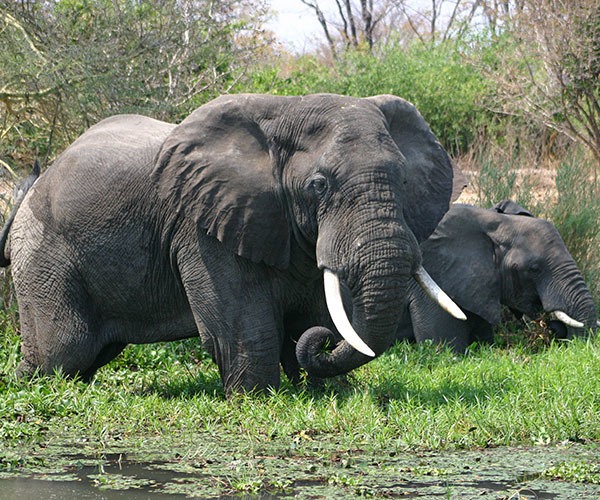 A safari in Malawi is about memorable experiences, not just tick lists; plenty of game in beautiful surroundings but no convoys of vehicles characteristic of some African game parks. Visitors are relatively few in number, giving everyone the opportunity to experience all types of safari: in a 4×4, by boat, or on foot, and even wildlife viewing from your balcony, in peaceful privacy.
A safari in Malawi is about memorable experiences, not just tick lists; plenty of game in beautiful surroundings but no convoys of vehicles characteristic of some African game parks. Visitors are relatively few in number, giving everyone the opportunity to experience all types of safari: in a 4×4, by boat, or on foot, and even wildlife viewing from your balcony, in peaceful privacy.
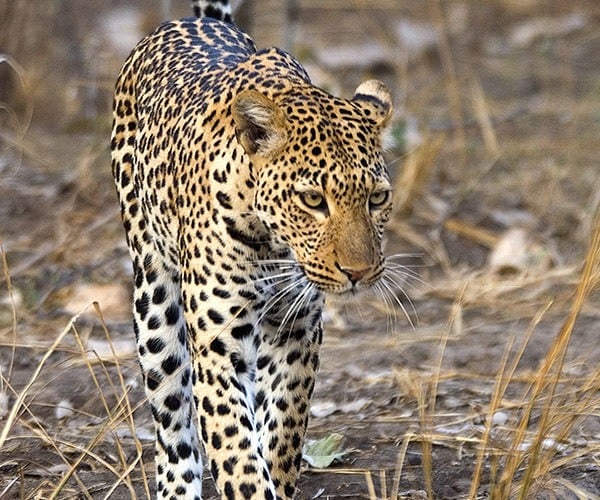 Malawi is also an ornithologist’s paradise. Few countries in the whole of Africa can rival Malawi’s range of bird species, coupled with the relative ease of birdwatching. Around 650 species have been identified with over ten per cent not being seen in other parts of southern Africa. Best known is the fish eagle to be seen at the Lake and along the River Shire. But the greatest variety of animal species is to be found under water, with Lake Malawi a real life aquarium that is home to around 1000 species of tropical fish – a number unsurpassed anywhere else in the world.
Culture
‘The Warm Heart of Africa’ is not just a marketing slogan, it’s a reality. Malawians are the most friendly people you could meet anywhere in the world. A warm, welcoming and safe nation, locals love to share their communities with visitors; and cultural experiences here are genuine and true to life.
Even in the context of Malawi’s great natural riches and attractions, its people are its greatest asset: friendly and welcoming. All visitors are met with smiles and a genuinely warm and lasting welcome. With a population now over 18 million, Malawi is one of the more densely populated countries in this region of Africa. Most people live in traditional rural villages. But these villages give visitors a wonderful opportunity to have a glimpse of real Africa – daily life as it is today in the heart of the continent. These are not tourist creations, but real people in real villages going about their lives. They are pleased to welcome in respectful visitors and proud to show them round. The majority of Malawi’s tourist lodges across the country have strong links to their local communities and can easily arrange village visits.
Malawi is also an ornithologist’s paradise. Few countries in the whole of Africa can rival Malawi’s range of bird species, coupled with the relative ease of birdwatching. Around 650 species have been identified with over ten per cent not being seen in other parts of southern Africa. Best known is the fish eagle to be seen at the Lake and along the River Shire. But the greatest variety of animal species is to be found under water, with Lake Malawi a real life aquarium that is home to around 1000 species of tropical fish – a number unsurpassed anywhere else in the world.
Culture
‘The Warm Heart of Africa’ is not just a marketing slogan, it’s a reality. Malawians are the most friendly people you could meet anywhere in the world. A warm, welcoming and safe nation, locals love to share their communities with visitors; and cultural experiences here are genuine and true to life.
Even in the context of Malawi’s great natural riches and attractions, its people are its greatest asset: friendly and welcoming. All visitors are met with smiles and a genuinely warm and lasting welcome. With a population now over 18 million, Malawi is one of the more densely populated countries in this region of Africa. Most people live in traditional rural villages. But these villages give visitors a wonderful opportunity to have a glimpse of real Africa – daily life as it is today in the heart of the continent. These are not tourist creations, but real people in real villages going about their lives. They are pleased to welcome in respectful visitors and proud to show them round. The majority of Malawi’s tourist lodges across the country have strong links to their local communities and can easily arrange village visits.
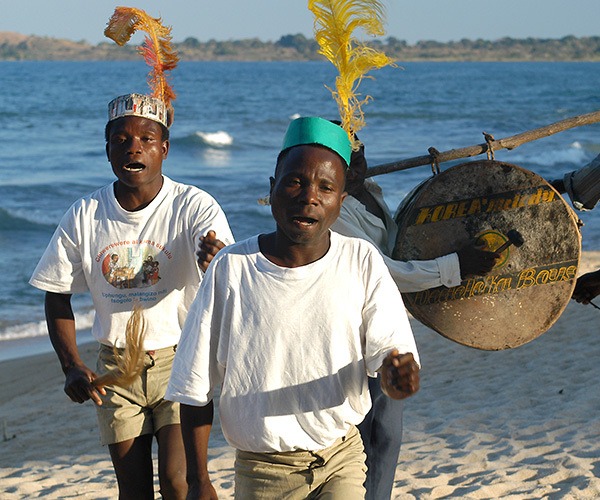 Many of today’s Malawians are descendants of the Bantu people who moved across Africa and into Malawi for hundreds of years up to the fifteenth century. There is now a rich cultural mix in Malawi with the Chewa being the most numerous tribe. Others include the Yao, the Nyanja and the Maravi. In the north the Tumbuka are prominent. Each tribe has contributed to the modern Malawi scene, whether it be in dress or dance or language. Masks are commonly used in various dances and ceremonies and these are usually tribe-specific. Traditional (African) doctors still attract many people and the two main ‘modern’ religions, Christianity and Islam, frequently exhibit a continuing adherence to traditional beliefs.
Many of today’s Malawians are descendants of the Bantu people who moved across Africa and into Malawi for hundreds of years up to the fifteenth century. There is now a rich cultural mix in Malawi with the Chewa being the most numerous tribe. Others include the Yao, the Nyanja and the Maravi. In the north the Tumbuka are prominent. Each tribe has contributed to the modern Malawi scene, whether it be in dress or dance or language. Masks are commonly used in various dances and ceremonies and these are usually tribe-specific. Traditional (African) doctors still attract many people and the two main ‘modern’ religions, Christianity and Islam, frequently exhibit a continuing adherence to traditional beliefs.
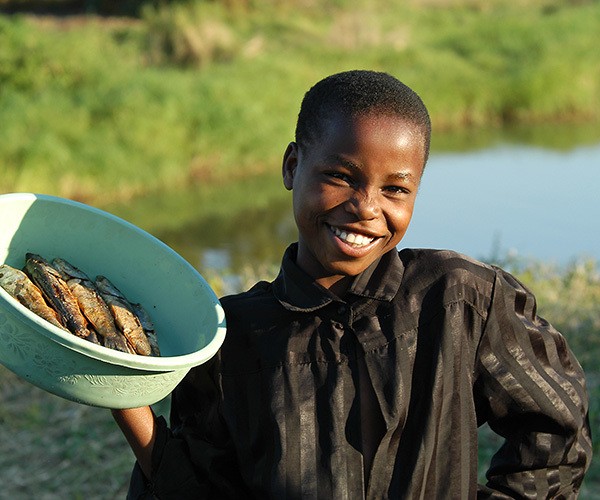 Although a Malawi cultural experience is generally about interacting with local people, one or two places around the country offer some specific cultural highlights. The Chongoni hills near Dedza have wonderful caves containing stone-age rock art and are another of Malawi’s World Heritage Sites. Dedza itself is home to the famous Dedza Pottery, which is a centre of crafting excellence, as is Mua Mission, whose amazing wood carvings are exported around the world. Mua also has a wonderful cultural museum. For the most modern cultural experience there are burgeoning music scenes in the cities of Lilongwe and Blantyre.
Lake
Although Malawi is one of Africa’s smaller countries, one-fifth of its surface is water. Accounting for all but a small fraction of that is Lake Malawi (formerly Nyasa, which means lake!). In Africa, only Lakes Victoria and Tanganyika are larger. Lake Malawi was “discovered” by the Scottish missionary and explorer Dr David Livingstone just over 150 years ago and it now forms an integral part of Malawi’s cultural heritage, bringing sustenance, livelihood, tourism and leisure to the country.
Lying in part of the Great East African Rift Valley system, Lake Malawi’s size is impressive: 585 kilometres north to south and 80 kilometres east to west. In imperial measure this gives rough dimensions of 365 miles by 52 miles, hence the sobriquet: the Calendar Lake. Almost all the larger rivers flowing into the lake come from the west, across Malawi, and, remarkably, only one river, the Shire, flows out. The waters eventually spill into the Indian Ocean via the Zambezi. The Lake, in the north, is quite extraordinarily deep at 2300 ft/700 m, plunging well below sea level. This reflects the enormity of the natural faulting of the Great Rift Valley, which is the origin of the Lake.
Although a Malawi cultural experience is generally about interacting with local people, one or two places around the country offer some specific cultural highlights. The Chongoni hills near Dedza have wonderful caves containing stone-age rock art and are another of Malawi’s World Heritage Sites. Dedza itself is home to the famous Dedza Pottery, which is a centre of crafting excellence, as is Mua Mission, whose amazing wood carvings are exported around the world. Mua also has a wonderful cultural museum. For the most modern cultural experience there are burgeoning music scenes in the cities of Lilongwe and Blantyre.
Lake
Although Malawi is one of Africa’s smaller countries, one-fifth of its surface is water. Accounting for all but a small fraction of that is Lake Malawi (formerly Nyasa, which means lake!). In Africa, only Lakes Victoria and Tanganyika are larger. Lake Malawi was “discovered” by the Scottish missionary and explorer Dr David Livingstone just over 150 years ago and it now forms an integral part of Malawi’s cultural heritage, bringing sustenance, livelihood, tourism and leisure to the country.
Lying in part of the Great East African Rift Valley system, Lake Malawi’s size is impressive: 585 kilometres north to south and 80 kilometres east to west. In imperial measure this gives rough dimensions of 365 miles by 52 miles, hence the sobriquet: the Calendar Lake. Almost all the larger rivers flowing into the lake come from the west, across Malawi, and, remarkably, only one river, the Shire, flows out. The waters eventually spill into the Indian Ocean via the Zambezi. The Lake, in the north, is quite extraordinarily deep at 2300 ft/700 m, plunging well below sea level. This reflects the enormity of the natural faulting of the Great Rift Valley, which is the origin of the Lake.
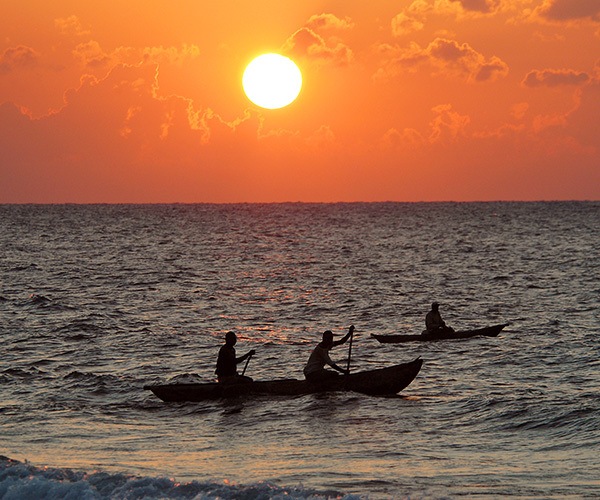 With its long stretches of totally uninhabited golden sand lakeshore, lapped by crystal clear waters, Lake Malawi is recognised as one of the country’s leading tourist attractions. It is perhaps the most important asset in Malawi’s huge potential for an expanding tourist industry. Visitors marvel at the beautiful golden sand beaches and appreciate all that this freshwater, tideless, inland sea has to offer. Many, seeing the lake for the first time, cannot believe that this is not the Indian Ocean!
The lake has so much to offer the visitor that it must surely be only a matter of time before it becomes one of the great attractions for travellers to this part of Africa. Whether it be water sports, its own national park, enticing off-shore islands or simply the abiding beauty of the lakeside, there is something for all tastes. The lake is Malawi’s seaside, without the problem of tides. The few days in the year when winds whip up the surface to storm conditions do nothing to lessen the attraction of this vast inland sea.
With its long stretches of totally uninhabited golden sand lakeshore, lapped by crystal clear waters, Lake Malawi is recognised as one of the country’s leading tourist attractions. It is perhaps the most important asset in Malawi’s huge potential for an expanding tourist industry. Visitors marvel at the beautiful golden sand beaches and appreciate all that this freshwater, tideless, inland sea has to offer. Many, seeing the lake for the first time, cannot believe that this is not the Indian Ocean!
The lake has so much to offer the visitor that it must surely be only a matter of time before it becomes one of the great attractions for travellers to this part of Africa. Whether it be water sports, its own national park, enticing off-shore islands or simply the abiding beauty of the lakeside, there is something for all tastes. The lake is Malawi’s seaside, without the problem of tides. The few days in the year when winds whip up the surface to storm conditions do nothing to lessen the attraction of this vast inland sea.
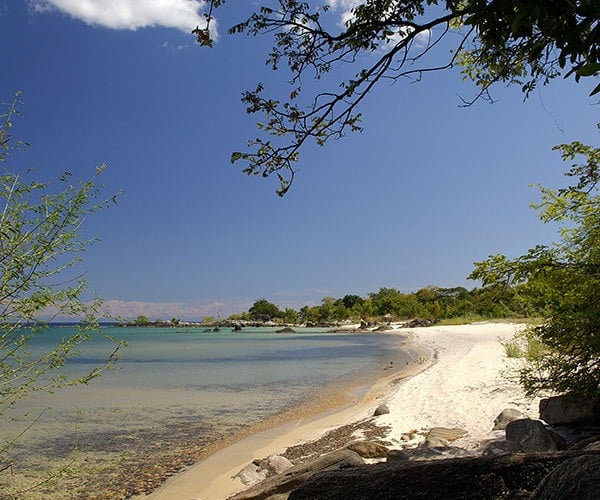 It is a remarkable fact that there are more species of fish found in Lake Malawi than are found in all of the lakes and rivers of Europe and North America combined! Those 1000+ species are mostly brightly coloured tropical fish that are very easily viewed when snorkelling, or diving. Lodges and hotels dotted along the Lake’s shore and islands offer a variety of accommodation at all levels and also plenty of activities. As well as the snorkelling and diving, water sports such as sail-boarding, kayaking, paddle-boarding, sailing, kayaking, and kite-surfing are available, though many visitors struggle to move away from the beach or a hammock! Journeys on the Lake range from the famous ‘lake ferry’, the mv Ilala, to sailing in an ocean-going yacht or exploring on a kayak expedition. Visitors are also welcome to explore the traditional fishing villages scattered along the shore to experience Malawi’s famed friendliness and ease of cultural interactions – even have a go at paddling a dugout canoe!
Landscape
Malawi’s natural scenery is stunningly beautiful. The diversity of landscapes is breath-taking and changes around every bend in the road: untouched wilderness, high plateaux, mountain peaks, riverine lowlands, vast tracts of forest, grasslands, and plantations of sugar and tea. All of this in a country smaller than England.
The highest peaks in Malawi touch 10,000ft/3000m while the lowlands are barely above sea level. These great contrasts help to make the landscape of Malawi one the most varied in Africa. The scenery, including its cloak of vegetation, presents an ever-changing vista that transforms through the seasons.
It is a remarkable fact that there are more species of fish found in Lake Malawi than are found in all of the lakes and rivers of Europe and North America combined! Those 1000+ species are mostly brightly coloured tropical fish that are very easily viewed when snorkelling, or diving. Lodges and hotels dotted along the Lake’s shore and islands offer a variety of accommodation at all levels and also plenty of activities. As well as the snorkelling and diving, water sports such as sail-boarding, kayaking, paddle-boarding, sailing, kayaking, and kite-surfing are available, though many visitors struggle to move away from the beach or a hammock! Journeys on the Lake range from the famous ‘lake ferry’, the mv Ilala, to sailing in an ocean-going yacht or exploring on a kayak expedition. Visitors are also welcome to explore the traditional fishing villages scattered along the shore to experience Malawi’s famed friendliness and ease of cultural interactions – even have a go at paddling a dugout canoe!
Landscape
Malawi’s natural scenery is stunningly beautiful. The diversity of landscapes is breath-taking and changes around every bend in the road: untouched wilderness, high plateaux, mountain peaks, riverine lowlands, vast tracts of forest, grasslands, and plantations of sugar and tea. All of this in a country smaller than England.
The highest peaks in Malawi touch 10,000ft/3000m while the lowlands are barely above sea level. These great contrasts help to make the landscape of Malawi one the most varied in Africa. The scenery, including its cloak of vegetation, presents an ever-changing vista that transforms through the seasons.
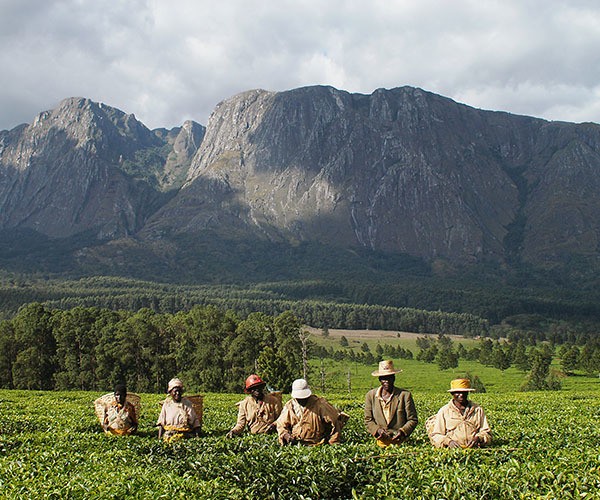 Lake Malawi, its immediate shoreline and the valley of the Shire River which drains it, lie within the Great Rift Valley of eastern Africa. From the Lake, a series of escarpments climb to the Central African Plateau (1600-5000ft/500-1500m). This is gently undulating land, punctuated by occasional hills and forests. Rising to even greater heights are Malawi’s true mountains: the whaleback plateau of Nyika and the mountainous Viphya in the north, the Dowa Highlands in the centre and, in the south, the two great massifs of Zomba and, highest of all, Mulanje, Central Africa’s grandest peak. Clothed in forests and broken by streams and waterfalls, these highlands provide a landscape not expected of Africa. As well as viewing points from which to see across countless miles of varied and magnificent landscapes, the forest reserves and uplands offer activities from climbing to trekking, mountain biking to birdwatching, or simple cool tranquillity in surroundings of incredible natural beauty.
Lake Malawi, its immediate shoreline and the valley of the Shire River which drains it, lie within the Great Rift Valley of eastern Africa. From the Lake, a series of escarpments climb to the Central African Plateau (1600-5000ft/500-1500m). This is gently undulating land, punctuated by occasional hills and forests. Rising to even greater heights are Malawi’s true mountains: the whaleback plateau of Nyika and the mountainous Viphya in the north, the Dowa Highlands in the centre and, in the south, the two great massifs of Zomba and, highest of all, Mulanje, Central Africa’s grandest peak. Clothed in forests and broken by streams and waterfalls, these highlands provide a landscape not expected of Africa. As well as viewing points from which to see across countless miles of varied and magnificent landscapes, the forest reserves and uplands offer activities from climbing to trekking, mountain biking to birdwatching, or simple cool tranquillity in surroundings of incredible natural beauty.
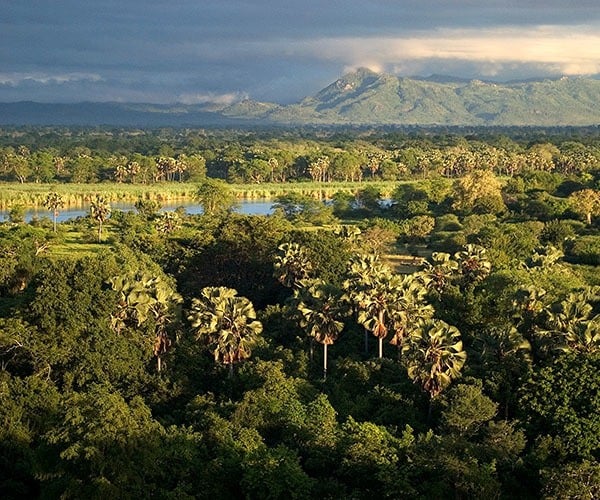 A visit to Malawi is not about staying in one place – it’s about touring, seeing new places and enjoying new experiences. Because of its compact size, in even a relatively short visit it is possible to experience the country’s range of attractions – lake, landscape, wildlife and culture – and see why Malawi is being tipped as Africa’s next ‘big’ destination.
Kelly White is Director of the Malawi Travel Marketing Consortium. Malawi Travel Marketing Consortium aims to provide you with the best information to make Malawi your tourism destination.
If you would like to be a guest blogger on A Luxury Travel Blog in order to raise your profile, please contact us.
A visit to Malawi is not about staying in one place – it’s about touring, seeing new places and enjoying new experiences. Because of its compact size, in even a relatively short visit it is possible to experience the country’s range of attractions – lake, landscape, wildlife and culture – and see why Malawi is being tipped as Africa’s next ‘big’ destination.
Kelly White is Director of the Malawi Travel Marketing Consortium. Malawi Travel Marketing Consortium aims to provide you with the best information to make Malawi your tourism destination.
If you would like to be a guest blogger on A Luxury Travel Blog in order to raise your profile, please contact us.Did you enjoy this article?
Receive similar content direct to your inbox.


I’m not sure that countries always realise that their people are their greatest asset. I used to visit the Caribbean a lot, when I first visited the people were usually friendly and welcoming. Lately a lot of them almost seem to resent tourists being there and it is one of the reasons I’ve stopped visiting. It’s great to hear that the Malawi people are genuinely welcoming it is the sort of thing that makes such a big difference to travel. For me it is a major reason to travel to Malawi.
Suddenly everybody’s talking about Malawi. Over the last couple of years it’s become a trendy destination. Some of my well-travelled friends who have done their safaris in Botswana, Kenya and South Africa in the past are now doing their research on Malawi. After reading this I’ll be looking at Malawi for my next safari too.
It’s always the pictures that draw me in. That one of the smiling boy is brilliant, for me he just sums up the friendliness of the Malawi people. And the photo of the canoeing at sunset makes me want to head for the airport right now. Also great is the picture of the gleaming beach. All in all they are a fantastic collection of photos which really sell Malawi.
Sometimes people can become very blinkered when they travel to Africa, they become fixated with just seeing the game and ticking off the Big Five on their list. It is a pity when that happens as they almost forget that the people have existed alongside the wildlife for millennia. I am pleased that this post mentions the culture too. When I go to Africa I always try to build some time for watching tribal dance and music, as well as the indigenous art, into my programme.